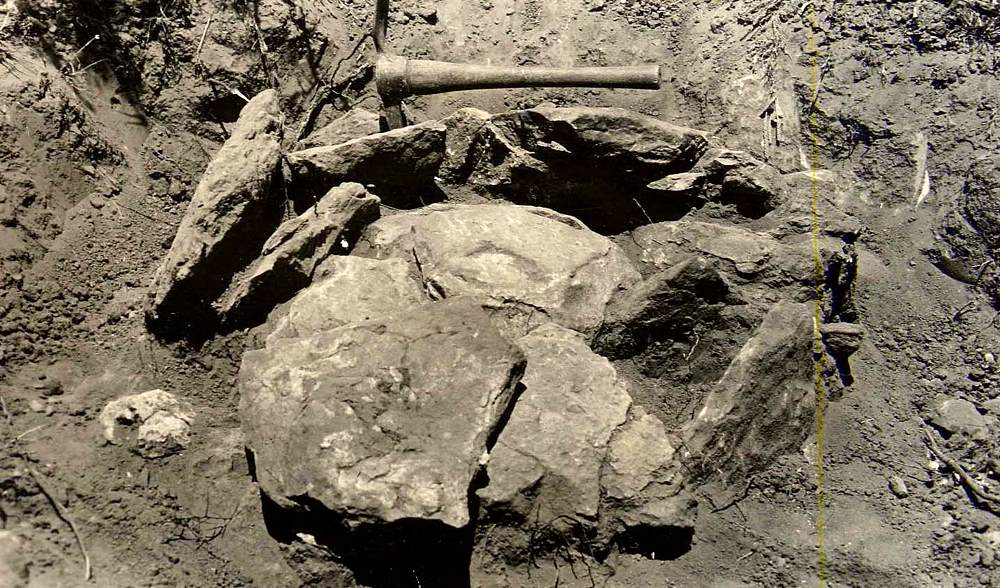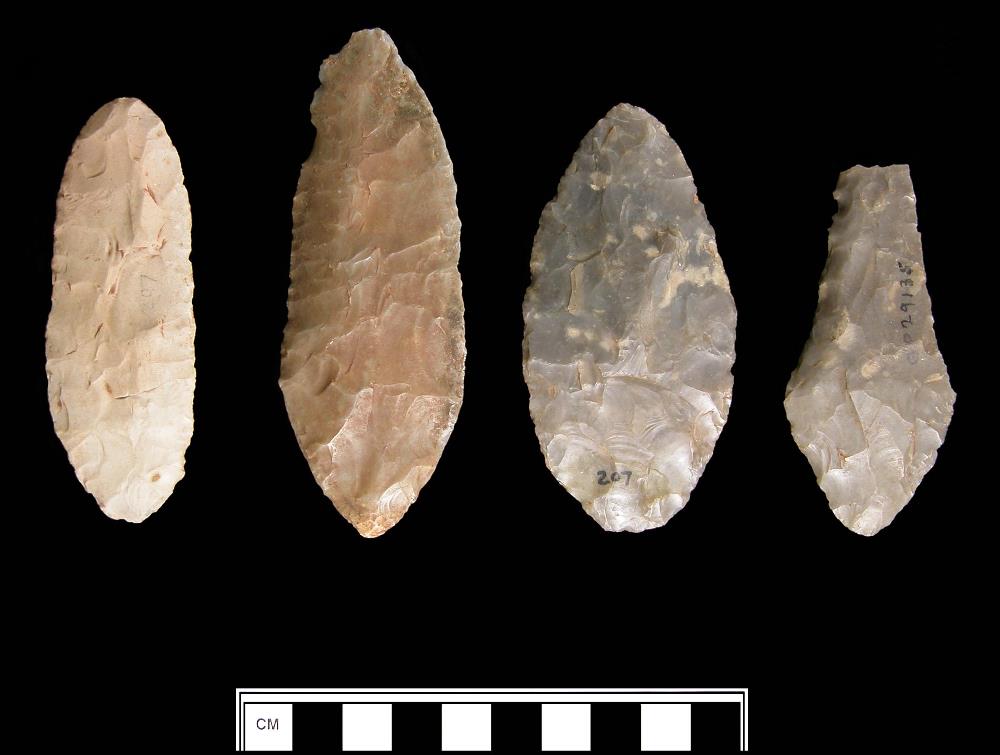Situated on high sandy ground above a dry branch of Mulberry Creek, this Nolan County site included a stone-covered cist within an extensive area of camp debris covering approximately three acres. Additional camp remains extended along the opposite bank of the creek.
Descriptions of this site are somewhat confusing, with only minimal information provided by excavator E. B. Sayles in his unpublished Texas Burial Customs. He describes the cairn as holding the flexed remains of an adult, lying on left side with head to the west, and facing north. Two fragments of mussel shell were the only items mentioned as being found in the grave.
According to a later description in a composite 1931 TASP article on burials by Cyrus Ray, the burial contained remains of a tortoise shell lying against the ribs along with a large, polished mussel shell with hinge sawed off. In Ray's view, the shell may have been used as a spoon. On the same level as the burial, a "crude patinated flint drill or awl" and numerous chert flakes were found. Ray described the bones of the individual as small and containing "all the peculiar features of the type," that is, a narrow, long-headed skull with heavy brow ridges.
Several burned rock mounds and an array of camp debris extended over a large area adjacent to, and perhaps encompassing the cairn. Erosion of the mounds exposed dense layers of burned rock, mussel shells, projectile points, debitage, manos, metates, hammerstones, and numerous chipped-stone tools including bi-pointed and beveled knives, and scrapers, including a small "thumbnail" scraper of likely Late Prehistoric II Toyah times.
Among the points were a few medial fragments of arrow points, two with slightly serrated edges, and a variety of chiefly Late Archaic and Transitional Archaic dart points, including Ensor and possibly Darl.
Numerous small specimens had been resharpened to the point that stylistic traits were fairly obliterated. It could be argued that these alternately beveled, lozenge-shaped bifaces may have started out as Darl or Zephyr dart points that had been recycled as small knives.
In Ray's view, the site area may have been "the permanent camp site of a populous village" which must have existed when climatic conditions were more moist and a water source more reliable. It is not known whether the burned rock mounds or camp debris were related to the cairn burial. Based on the camp materials, occupations at the campsite spanned several thousand years. |

Burial cist prior to removal of stone layers. Photo by E. B. Sayles. TARL Archives.  |

Examples of projectile points, including arrow point fragments, recovered from the campsite near the stone cairn. Correlation to the burial, if any, could not be established. Note "thumbnail" scraper at top right. Photo by Laura Nightengale. TARL Collections.  |

Examples of chipped-stone tools, including bipointed beveled knives, recovered from the campsite near the stone cairn. Photo by Laura Nightengale. TARL Collections.  |
|